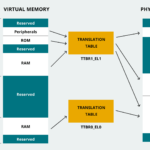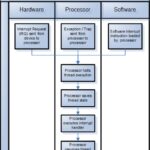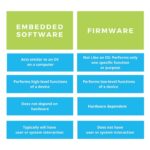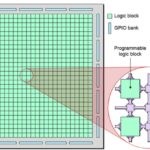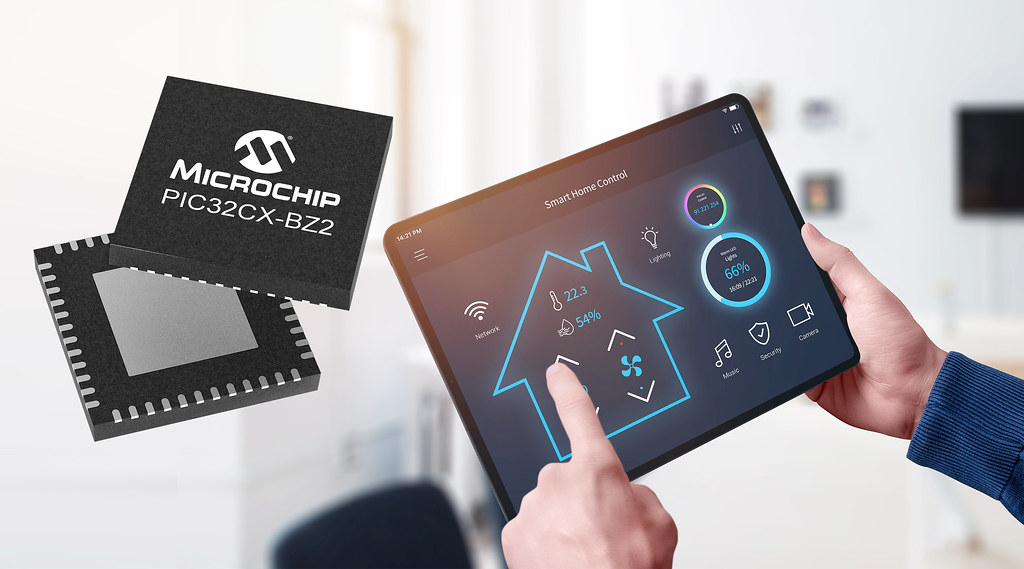 Wireless connectivity has become a mandatory feature for many products but often increases the cost and complexity of system design since it generally must be added as part of the larger application. Microchip Technology Inc. is introducing its first Arm Cortex-M4F-based PIC microcontroller (MCU) family that solves this wireless connectivity design challenge by integrating Bluetooth Low Energy functionality directly into one of a system’s most basic components, supported by one of the industry’s most comprehensive developer ecosystems.
Wireless connectivity has become a mandatory feature for many products but often increases the cost and complexity of system design since it generally must be added as part of the larger application. Microchip Technology Inc. is introducing its first Arm Cortex-M4F-based PIC microcontroller (MCU) family that solves this wireless connectivity design challenge by integrating Bluetooth Low Energy functionality directly into one of a system’s most basic components, supported by one of the industry’s most comprehensive developer ecosystems.
Microchip’s PIC32CX-BZ2 family includes System-on-Chip (SoC) devices as well as global regulatory-certified, RF-ready modules. In addition to Bluetooth Low Energy functionality, the family includes Zigbee stacks and Over the Air (OTA) update capabilities. Hardware features include a 12-bit analog-to-digital converter (ADC), multiple timer/counters for control (TCC) channels, an on-board encryption engine, and a broad set of interfaces to touch, CAN, sensor, display, and other peripherals. The family’s 1 MB of Flash memory supports large application codes, multiprotocol wireless stacks, and OTA updates. AEC-Q100 Grade 1 (125 °C) qualified packages further simplify wireless connectivity integration where highly robust solutions are required.
The PIC32CX-BZ2 MCU family simplifies development through Microchip’s MPLAB Harmony 32-bit embedded software development framework. MPLAB Code Configurator integration enables developers to quickly begin prototyping with the PIC32CX-BZ2 family using drag-and-drop auto code generation. Numerous application code examples are hosted on GitHub and linked through MPLAB Code Configurator and MPLAB Discover. RF design with PIC32CX-BZ2 SoCs is simplified with the ecosystem’s chip-down reference design packages and wireless design check services. Customers with little to no RF expertise can benefit from Microchip’s WBZ451 modules which are pre-certified to multiple regulations around the world and feature an optimized onboard RF design.
In addition to the MPLAB Code Configurator, the MPLAB Harmony v3 framework includes numerous other tools and an ecosystem of debuggers, programmers, virtual sniffers, and compilers. Other support includes GitHub demo applications and documentation, wireless design check services, and building blocks that walk developers through all the steps involved in the application development process. The PIC32CX-BZ2 family is supported by the PIC32CX-BZ2 and WBZ451 Curiosity Development Board (Part number: EV96B94A).
The PIC32CX-ZB2 family is in-stock and available now. PIC32CX1012BZ25048-I and PIC32CX1012BZ25048-E SoCs ship in 7 x 7 mm 48 Quad-Flat No-leads (QFN) packages. The WBZ451PE-I and the WBZ451UE-I modules come with an onboard Printed Circuit Board (PCB) antenna and a U.FL connector for the external antenna respectively.

